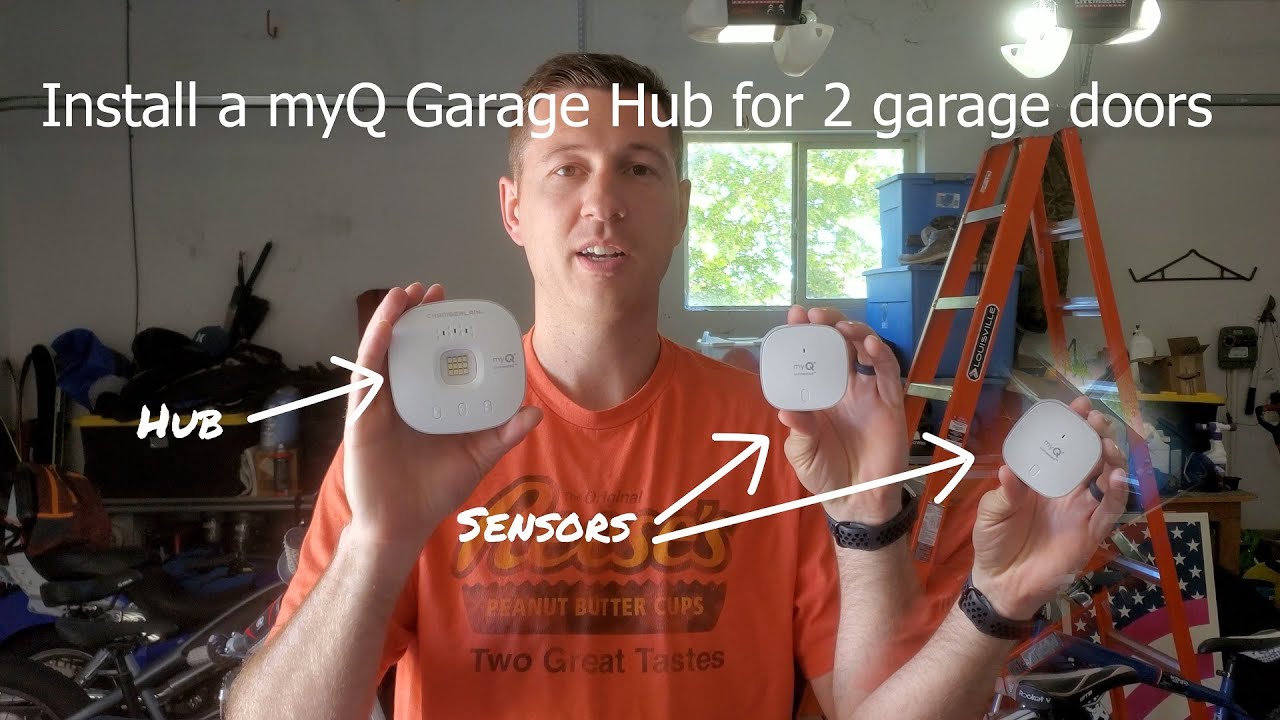How To Set Up Myq Garage Opener

So, you're looking to dive into the world of smart garage openers and specifically, getting your MyQ garage opener set up. Excellent choice! These devices bring a lot of convenience, but understanding how they work under the hood – both physically and within your home's network – is crucial for effective installation, troubleshooting, and even customizing your smart home setup down the road. This article will walk you through the process, covering everything from the underlying technology to practical troubleshooting.
Purpose: Why Understand Your MyQ Garage Opener?
While the MyQ app makes operating your garage door a breeze, knowing the technical ins and outs is invaluable. This understanding allows you to:
- Diagnose Problems Quickly: Identify whether the issue lies with the MyQ hub, the garage door motor, or your home network.
- Perform Basic Repairs: Simple issues like a loose wire or a disconnected sensor can be easily fixed yourself with the right knowledge.
- Integrate with Other Smart Home Systems: Understanding the communication protocols allows for seamless integration with other platforms like IFTTT or Home Assistant.
- Understand Security Implications: Knowledge of the system helps you implement better security practices and identify potential vulnerabilities.
Key Specs and Main Parts
Let's break down the hardware involved in a typical MyQ garage opener setup:
The MyQ Hub (or Smart Garage Control)
This is the brains of the operation. It's a small Wi-Fi enabled device that acts as a bridge between your garage door opener and your home network. Key specs include:
- Wi-Fi Connectivity: Typically supports 2.4 GHz 802.11 b/g/n. Pay attention to this! Your router needs to support this standard.
- Security Protocols: Uses WPA2 encryption for secure communication.
- Power Supply: Usually a low-voltage DC adapter (e.g., 5V DC).
- Compatibility: Supports a wide range of garage door openers. Check the MyQ website for a compatibility list before you buy!
Garage Door Opener Motor Unit
This is your existing garage door opener. While MyQ integrates *with* it, understanding its core functions is essential. We're looking at these components:
- Motor: The power source that drives the door up and down. AC or DC motors are common.
- Limit Switches: These switches tell the motor when the door has reached its fully open or fully closed position. Misalignment can cause problems.
- Safety Sensors (Photo Eyes): Infrared sensors that prevent the door from closing if an obstruction is detected. These are critical for safety!
- Wall Control Panel: The physical button inside your garage that operates the door. The MyQ hub often connects to the terminals for this button.
Door Sensor
This sensor attaches to your garage door and communicates with the MyQ hub to indicate whether the door is open or closed. It typically uses:
- Wireless Communication: Often uses a low-power radio frequency (RF) to communicate with the hub.
- Battery Powered: Typically runs on a coin-cell battery.
- Accelerometer: Detects changes in orientation to determine door status.
How It Works: Connecting the Pieces
Here’s the overall process, in simplified terms:
- Hub Setup: The MyQ hub connects to your home Wi-Fi network, acting as a central point of communication. It uses the MyQ app on your smartphone for initial setup and configuration.
- Opener Connection: The hub either wires directly to the garage door opener motor unit (typically to the same terminals as the wall control button) or communicates wirelessly through radio frequency.
- Door Sensor Communication: The door sensor reports the door's open/closed status to the hub.
- App Control: The MyQ app sends commands to the hub via the internet. The hub, in turn, signals the garage door opener to open or close the door.
Real-World Use and Troubleshooting
Even with a well-configured system, issues can arise. Here are a few common problems and how to address them:
- Hub Not Connecting to Wi-Fi:
- Solution: Ensure your Wi-Fi router is broadcasting on the 2.4 GHz band. Check your Wi-Fi password. Try moving the hub closer to the router during setup. Look for interference.
- Door Not Responding to App Commands:
- Solution: Check the door sensor's battery. Verify the wired connections between the hub and the garage door opener. Ensure the safety sensors (photo eyes) are aligned and unobstructed. A common problem is cobwebs or debris blocking the beam.
- Intermittent Operation:
- Solution: Check for Wi-Fi interference from other devices. Update the MyQ app and hub firmware to the latest versions. Sometimes a firmware bug can cause unexpected behavior.
- Garage door opens or closes unexpectedly:
- Solution: Immediately change your MyQ password. Consider enabling two-factor authentication if available. Review connected services in the MyQ app to ensure no unauthorized apps are controlling your door.
Safety Considerations
Working with electrical devices can be dangerous. Always follow these precautions:
- Disconnect Power: Before working on any wiring, disconnect the garage door opener from the power outlet. This prevents electrical shock.
- Safety Sensors: Never bypass or disable the safety sensors (photo eyes). These are crucial for preventing accidents.
- Wiring: Use appropriately sized and insulated wiring. Improper wiring can create a fire hazard.
- Read the Manual: Consult the MyQ manual and your garage door opener's manual for specific safety instructions.
We Have The File!
We have a detailed connection diagram of the MyQ Garage Door Opener, highlighting the core components and their interactions. It's invaluable for deeper understanding and troubleshooting.
This diagram shows:
- The Wi-Fi Communication between the Hub, Router, and MyQ servers.
- The wiring between the hub and the garage door motor.
- The RF communication between the door sensor and hub.
- Key Specs: Volts, Amps, Ohms (If applicable).
- Safety Specs: Grounding Points, Fuse Locations.
You can download it to reference it during installation and maintenance. It's a great resource to have on hand. This document, combined with your newfound knowledge, will make you a MyQ master in no time!
